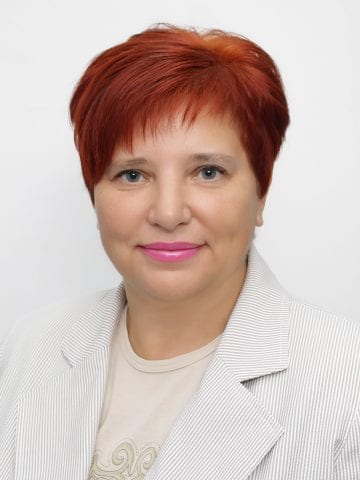Economic development of Ukraine after 2014

Valeriia Loiko,
Doctor of Economics, Professor,
Department of Finance and Economic,
Boris Grinchenko University of Kyiv,
Chairman,
Council of the European Economic Association,
Kyiv, Ukraine
The peculiarity of modern economic development of Ukraine is the reforming of the economy and its European integration direction. The development of the Ukrainian economy is directed towards cooperation with the countries of the European Union. 2014 was a difficult year for Ukraine. Territorial losses could not but affect the economy of Ukraine. In the period 2014-2018, the gross domestic product in monetary terms increased 2.24 times. Aggregate income per month per household also increased 2.7 times. However, it should be noted that Ukrainian households spend 93% of their income on their own consumption. That is, as Ukrainian families’ incomes rise, consumption increases proportionally, which prevents families from making sufficient savings. In today’s Ukrainian realities, having a job does not guarantee protection against poverty. Poverty in the working population in Ukraine is driven by low wages and significant income inequality across different household groups. Thus, the standard of living of the population is growing at a very slow pace.
The development of enterprises and entrepreneurship reflects the economic and social changes that are taking place in society as a whole. The number of economic entities in the territory of Ukraine decreased in the period 2014-2018. by 4.79%. This tendency is explained by the fact that non-competitive businesses are leaving the market. Factors such as rising prices for consumables, high taxes, increased competition and high interest rates on banks are pushing them away. At the same time, the number of natural persons-entrepreneurs is increasing, their share in the number of economic entities is almost 81%. Production volumes of industrial and agricultural products for the period 2014 -2018 increased in value. However, this increase is largely due to the rise in prices for goods and services.
Investing in the development of individual businesses contributes to a faster development of the economy, which is a positive trend. According to studies in Ukraine, only 4.6% of companies have at least 10% of foreign direct investment in seed capital. These businesses are much more productive. Ukrainian companies working with foreign investments account for 20.4% of the able-bodied population of Ukraine and 24% of Ukraine’s total capital. These figures make it possible to confirm the importance of investment activity in the economic development of both individual businesses and cities, regions and the country as a whole. The economic downturn in the country is accompanied by a decline in investment in both industry and other sectors of the economy. It should be noted that the rate of decline in investment processes is higher than the rate of decline in industrial output.
The influx of foreign direct investment in the country’s economy is uneven. FDI volumes tended to increase before 2014 inclusive. In 2018, FDI decreased by 39.89% compared to 2014. It should be noted that the share of FDI inflows into the economy of Kyiv is significant and ranged from 48.09% in 2014 to 50, 63% in 2018. Thus, due to the increase in the share of foreign direct investment in the economy of the city of Kiev, the city has not lost investment volumes. By volume of investment it is possible to distinguish the top five top countries – investors in the economy of the city of Kiev. The share of these countries in the total amount of foreign direct investment in the economy of the city of Kyiv in 2018 is as follows: Cyprus – 22%, the Russian Federation – 19%, the Netherlands – 16%, France – 5%, the United Kingdom – 5%, other countries – 33 %. Analysis of the dynamics of foreign direct investment in the economy of Ukraine by type of activity shows that the most attractive type of investment activity is financial and insurance activities.
The following changes were observed in the sphere of foreign economic activity of Ukraine. Export operations decreased by 12.18% in 2018 compared to 2014. Imports increased by 5.07% over the same period of time. The foreign trade balance of Ukraine in 2018 was negative: imports exceeded exports by 17.23%. The situation in 2014 was better: imports exceeded exports by 0.97%. The dynamics of the geographical structure of Ukraine’s foreign economic activity in 2018 is as follows. The share of foreign trade operations with European countries is 40.60%, with Asia – 23.81%, Africa – 1.33%, the Americas – 7.19%, other countries – 27.07%. The share of export operations between Finland and Ukraine in 2018 amounted to 0.23%, of import operations – 1.1% of the total number of operations.
The development of the national economy at the expense of innovative factors requires the growth of the share of innovatively active enterprises. It should be noted that the share of innovative enterprises was not high, accounting for only 14.1% of the total number of enterprises in 2018. The share of high-tech exports in total exports of industrial products to Ukraine in 2018 was only 6.9%. Previous attempts to create a state innovation policy in Ukraine through selective assistance in the development of specific industries, sub-sectors and projects have had limited positive impact.
Expert article 2606
